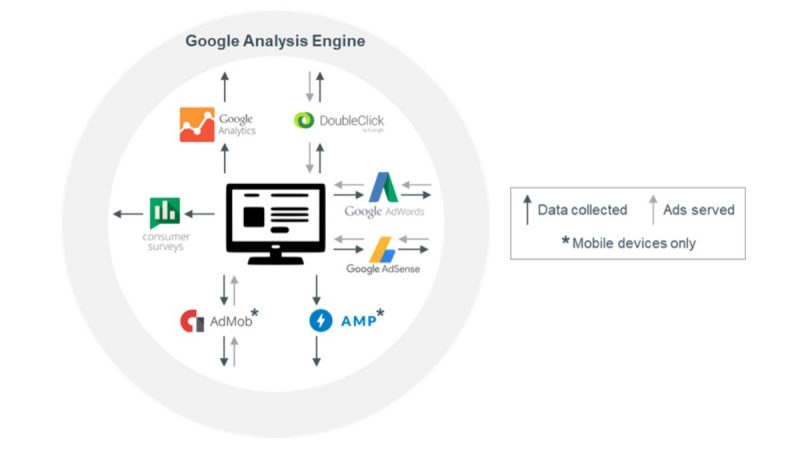A new research shared by Digital Content Next, reveals idle Android devices send 10 times more data than iOS devices. In a paper titled “Google Data Collection,” by Douglas C. Schmidt, a computer science professor at Vanderbilt University. Schmidt in the research catalogues how much data Google is collecting about consumers and their most personal habits across all of its products and how that data is being tied together.
More from Schmidt’s research findings:
- An idle Android phone with Chrome web browser active in the background communicated location information to Google 340 times during a 24-hour period. An equivalent experiment found that on an iOS device with Safari open but not Chrome, Google could not collect any appreciable data unless a user was interacting with the device.
- Additionally an idle Android phone with running Chrome sends back to Google nearly fifty times as many data requests per hour as an idle iPhone running Safari. Overall, an idle Android device was found to communicate with Google nearly 10 times more often than an Apple device communicates with Apple servers.
- Data transmission frequencies on an android device can potentially tie together data through passive means with the help of user’s personal information. For example, anonymous advertising identifiers collect activity data from apps and third-party web page visits of a user.
- Similarly Google can associate the cookie to a user’s Google account when a user accesses a Google app in the same browser that a third-party web page was accessed.

Source: Digital Content Next
- The research also showed Google to track location data even after the consumer turned off their settings. Google had clarified about its location policies but yet it continues to track location data through app features. The location data is used for ad targeting purposes, Google’s primary business model.
- While Apple uses differential privacy to gather anonymous usage insights from devices like iPhones, iPads, and Macs. Apple says the data it collects off-device is used to improve services like Siri suggestions, and to help identify problematic websites that use excessive power or too much memory in Safari.
- When users sets up their iOS device, it will explicitly asks users if they wish to provide usage information on an opt-in basis. If a user declines, no data is collected by the device unless they choose to opt in at a later time.
Apple CEO, Tim Cook and Apple executives’ belief that customers are not the company’s product seems to be clearly in action here. The company also has a dedicated privacy website that explains its approach to privacy and government data requests.
Read Next:
Twitter’s trying to shed its skin to combat fake news and data scandals, says Jack Dorsey
Mozilla’s new Firefox DNS security updates spark privacy hue and cry










![How to create sales analysis app in Qlik Sense using DAR method [Tutorial] Financial and Technical Data Analysis Graph Showing Search Findings](https://hub.packtpub.com/wp-content/uploads/2018/08/iStock-877278574-218x150.jpg)


